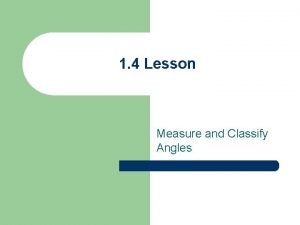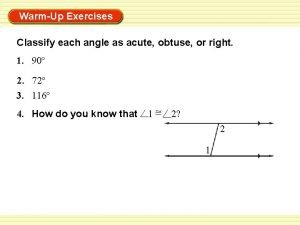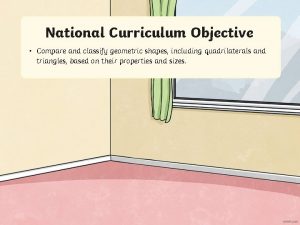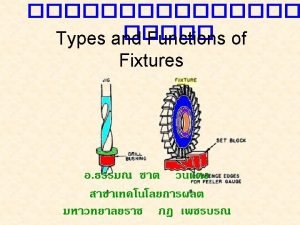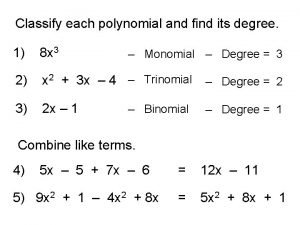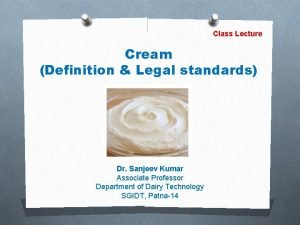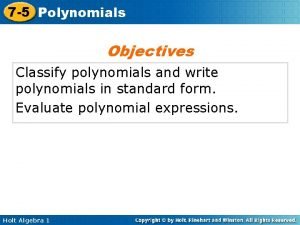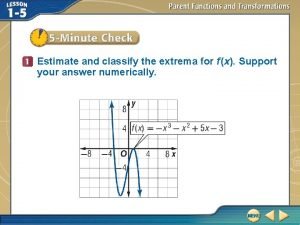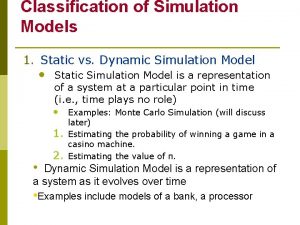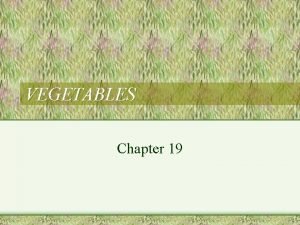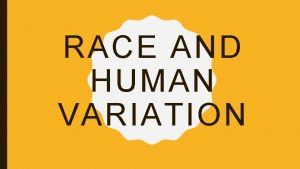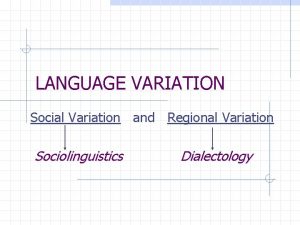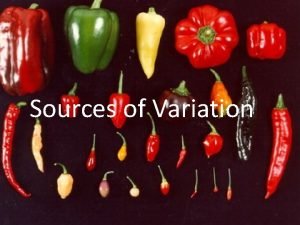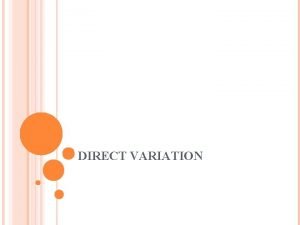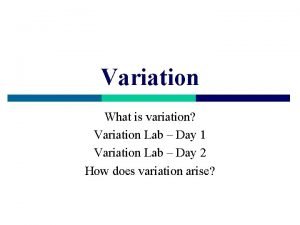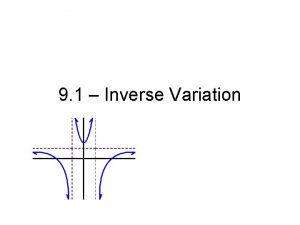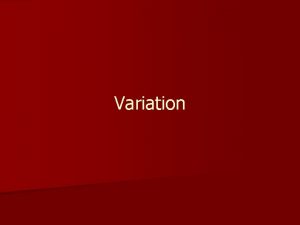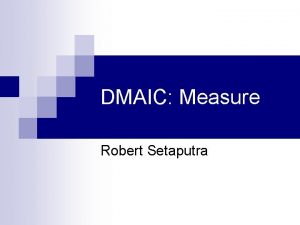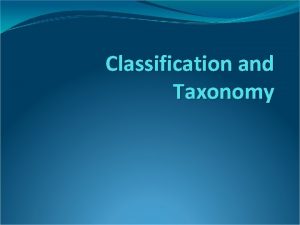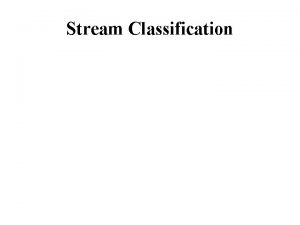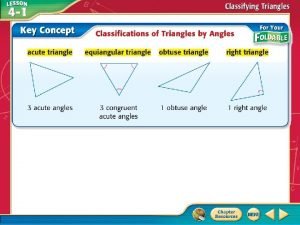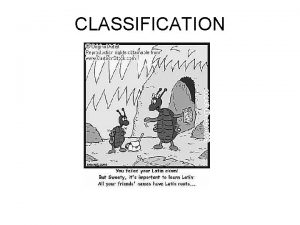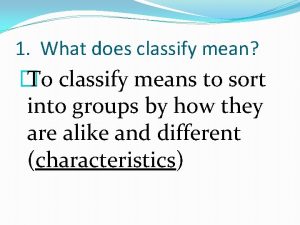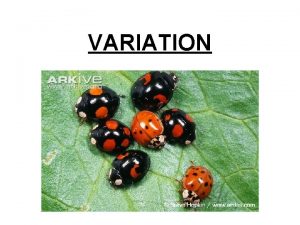HUMAN VARIATION How do we measure and classify




























- Slides: 28

HUMAN VARIATION


How do we measure and classify human variation in order to study it?

TWO TYPES OF TRAITS Discrete or discontinuous traits: traits occur in distinct Categories: Trait is there or it is not (examples: albinism, cystic fibrosis, Huntington’s disease) Mendelian inheritance, single genes, dominance, recessiveness Continuous traits: Distribution of phenotypes in the population varies along a continuum. Individuals differ by small degrees. (examples include height, blood pressure, reaction time, learning ability) Polygenic quantitative or multifactorial inheritance. Genes act additively.



INHERITANCE OF CONTINUOUS TRAITS A simple case with two loci, two alleles each A A 1 B B 1 An allele with a prime 1, adds one unit of measure to the phenotype

If a trait, say height, is controlled by two loci, A and B, and each locus has two alleles, one regular and one prime allele, what are the possible genotypes and phenotypes? AABB AA 1 BB AABB 1 AA 1 BB 1 A 1 A 1 BB AAB 1 B 1 A 1 A 1 B 1 B A 1 AB 1 B 1 A 1 A 1 B 1 B 1 0 -----short 1 ----------semi-short 2 ----------average 2 -----average 3 ----------semi-tall 4 -----tall

semishort average semitall AABB AA 1 BB 1 A 1 A 1 B 1 B 1 AABB 1 A 1 A 1 BB A 1 AB 1 B 1 AAB 1 B 1 0 1 2 3 4

Two loci, Two alleles Three loci, Two alleles

Characteristics of polygenic inheritance: 1. A substitution at one locus usually produces the 2. same effect on the phenotype as a substitution at 3. another. 2. Many loci with small, additive effects. 3. Tall parents can produce a short child, etc 4. Average parents can produce a tall 5. or short child

Why are the traits continuous? Because of the environment. In height, for example, nutritional differences can play a major role in variation For skin color, exposure to sun can modify the phenotype How do we know how much of the variability we see among people is due to genetic differences between them as opposed to environmental differences?

What are the components of variability in a group of people? Vt = Ve + Vg Vt = total variability Ve = environmental variability Vg = genotypic variability Heritability: the proportion of the variability among Individuals in a population that is due to genotypic differences among them or Vg/Vt

Heritability can range from 0. 0 to 1. 0 If H = 0. 0 it means that all of the variability observed in a trait in a given population is due to environmental differences experienced by the individuals If H = 1. 0 it means that all of the differences are due to genetic differences among the people For most continuous traits, heritability is somewhere in between.

TWIN STUDIES TO MEASURE HERITABILITY Dizygotic (DZ) twins: two egg twins, same degree of genetic relatedness as normal siblings (25% genes in common) Monozygotic (MZ) twins: one egg twins genetically identical (100% genes in common)

Concordant: have the same trait Discordant: do not have the same trait

Twin 1 CORRELATION? Twin 1 DIZYGOTIC TWINS

Twin 1 CORRELATION? Twin 1 MONOZYGOTIC TWINS

h 2= 2(r(MZ)-r(DZ)) Where r stands for the correlation between twins

Trait Heritability Height Weight Body Mass Index (BMI) 0. 60 -0. 81 0. 42 -0. 63 0. 50 -0. 90 Systolic Bood Pressure Triglyceride level Plasma cholesterol 0. 17 -0. 39 0. 68 -0. 72 0. 37 -0. 50

Polygenic threshold traits: a certain number of alleles for the trait must be present before it appears phenotypically 0 1 3 4 5 6 7 8 9 10

PYLORIC STENOSIS: CLOSURE OF THE PYL 0 RIC REGION OF THE STOMACH


M F 0 1 2 3 4 5 6 7 8 9 10 11 12 13 14

CLEFT LIP AND PALATE: UNILATERAL BILATERAL

UNI BI 0 1 2 3 4 5 6 7 8 9 10 11 12 13 14

Who has the greater probability of having a child with cleft lip and palate? A person with unilteral or with bilateral expression of the trait?

Terms to know: Continuous trait Threshold trait Multifactorial inheritance Additive genetic variants Heritability Concordance-discordance
 Name of the angles
Name of the angles Find the sum and then classify it.
Find the sum and then classify it. Which graph represents a function with direct variation
Which graph represents a function with direct variation Direct and inverse variation
Direct and inverse variation How to calculate sst in regression
How to calculate sst in regression Air temperature
Air temperature Gibbons jacobean city comedy download
Gibbons jacobean city comedy download Introduction to human variation
Introduction to human variation 8.3 human needs
8.3 human needs Chapter 8 human needs and human development
Chapter 8 human needs and human development Human and non human nouns
Human and non human nouns Compare and classify geometric shapes
Compare and classify geometric shapes How do you classify uniform and non-uniform mixtures?
How do you classify uniform and non-uniform mixtures? Mixtures and solutions grade 7
Mixtures and solutions grade 7 Duplex fixture
Duplex fixture Classify by degree
Classify by degree Legal standards definition
Legal standards definition Miscellaneous tools examples
Miscellaneous tools examples Polynomial names by degree and number of terms
Polynomial names by degree and number of terms How to classify rational and irrational numbers
How to classify rational and irrational numbers Is a rectangle always a quadrilateral
Is a rectangle always a quadrilateral Classify non flowering plants
Classify non flowering plants All materials found at home are useful
All materials found at home are useful 1-4 extrema and average rates of change
1-4 extrema and average rates of change Estimate and classify the extrema for the graph
Estimate and classify the extrema for the graph Static vs dynamic simulation
Static vs dynamic simulation Functions of fruits
Functions of fruits Classify polynomials by degree
Classify polynomials by degree Values in nursing profession ppt
Values in nursing profession ppt
